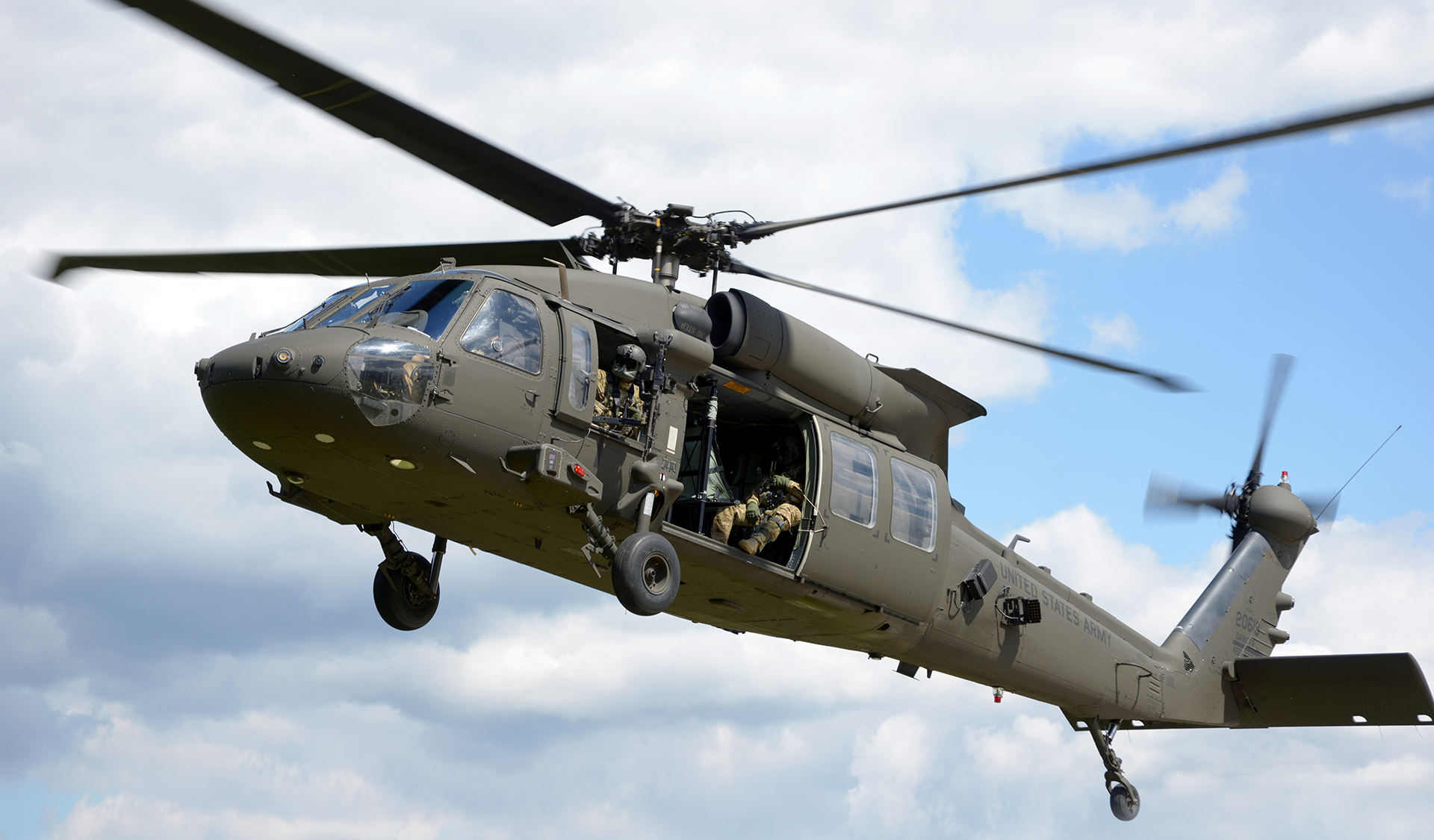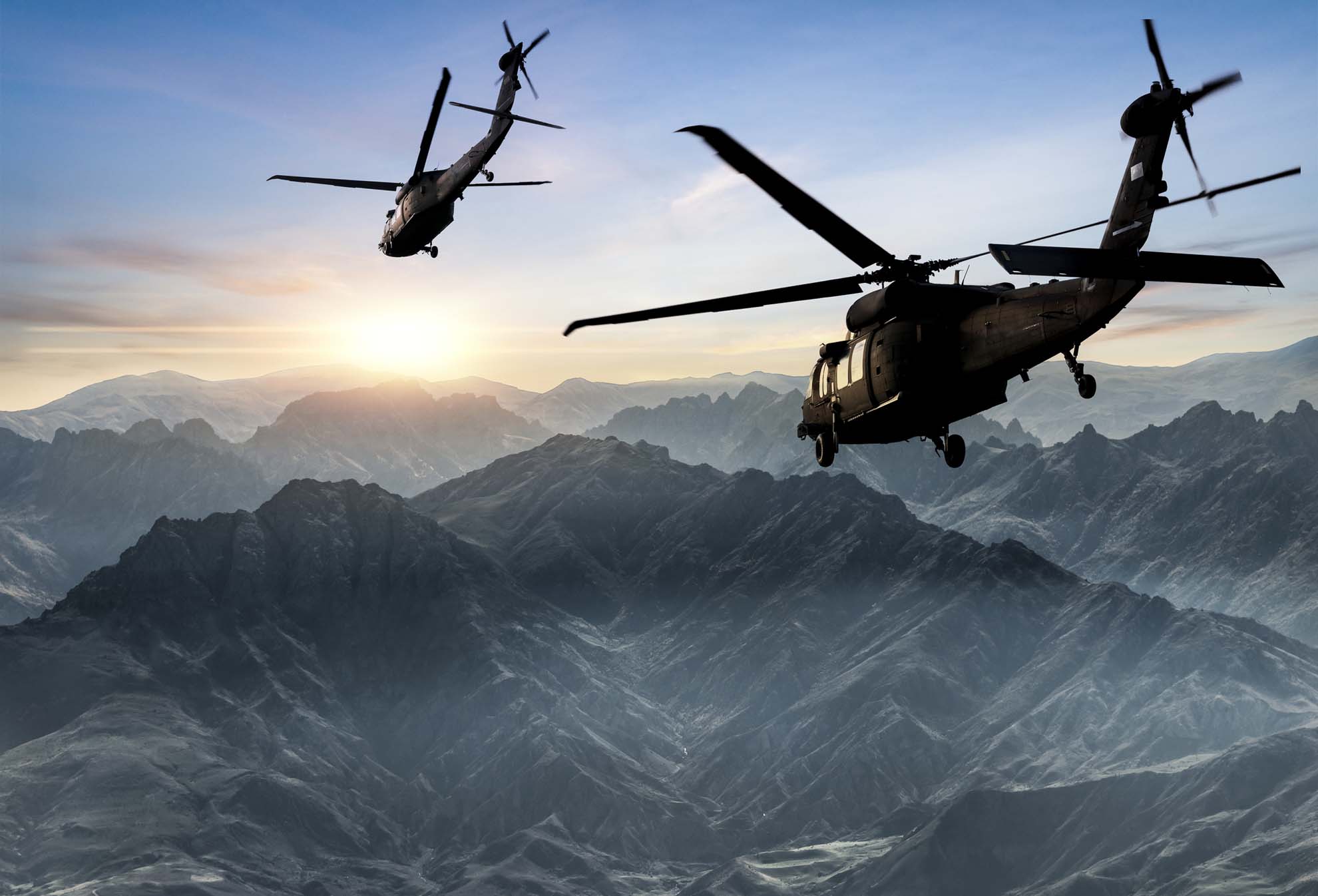Why the UH 60 Remains a Fave Choice Amongst Armed Forces Worldwide
Why the UH 60 Remains a Fave Choice Amongst Armed Forces Worldwide
Blog Article
UH-60: Developments in Modern Helicopter Design
The UH-60 helicopter stands as a standard in modern-day air travel, showcasing significant advancements in design and innovation that cater to the progressing demands of army operations. As we discover the evolution and key developments of the UH-60, it becomes vital to take into consideration just how these developments influence not only existing applications yet additionally the future landscape of helicopter style.

Development of the UH-60
The development of the UH-60 Black Hawk helicopter represents a significant landmark in aerospace design and armed forces aviation. Presented in the late 1970s, the UH-60 was created by Sikorsky Aircraft to fulfill the USA Army's need for a functional energy helicopter efficient in performing a range of missions. Its layout highlighted ability to move, toughness, and speed, establishing new requirements for operational performance.
The UH-60 includes an unique four-blade blades system, which enhances lift and security, enabling it to run effectively in varied environments. Its airframe is built from innovative composite materials, adding to a decrease in weight while maintaining architectural integrity. The helicopter's style additionally incorporates enhanced the rules of aerodynamics, which enhances fuel performance and increases variety.
For many years, the Black Hawk has actually gone through numerous upgrades to enhance its abilities, consisting of boosted engines, advanced flight control systems, and modular systems for simple upkeep and adaptability. The helicopter's ability to do goals ranging from troop transport to clinical discharge has actually strengthened its role as a backbone of U.S. armed forces procedures. The UH-60 Black Hawk continues to be a prime example of how technology in helicopter design can considerably affect armed forces performance and functional adaptability.
Advanced Avionics Equipments
Developments in avionics systems have transformed the capabilities of modern helicopters like the UH-60 Black Hawk, improving operational efficiency and situational understanding (UH 60). The combination of advanced avionics enables for boosted navigating, interaction, and trip monitoring, making the UH-60 extra functional in varied objective profiles
One of the essential features is the innovative electronic cabin, which utilizes multifunction displays that supply real-time information, making sure pilots have instant access to crucial flight information. This streamlining of info lessens pilot workload and enhances decision-making processes throughout complicated operations. In addition, the consolidation of GPS and inertial navigation systems enables precise positioning and course preparation, improving goal implementation in challenging settings.
Additionally, progressed avionics systems improve communication capacities with secure information links and voice interaction systems, enabling smooth sychronisation with ground forces and various other aircraft. The assimilation of automatic trip control systems even more adds to improved security and control, especially in adverse climate condition or throughout low-altitude maneuvers.
Engine and Efficiency Enhancements
Engine performance in modern helicopters has taken a substantial jump onward, driven by innovations that increase efficiency, dependability, and power. The UH-60 Black Hawk, for circumstances, uses the T700-GE-701C engine, which includes a dual-channel, full-authority digital engine control system.
Additionally, the combination of engine health and wellness monitoring systems allows for real-time diagnostics and predictive upkeep, significantly improving functional integrity. These systems not just alert teams to potential issues before they become important however likewise help with much more efficient upkeep organizing, consequently decreasing downtime.

Materials and Structural Innovations
Recent advancements in materials and architectural layout have actually revolutionized modern helicopter building and construction, improving both performance and longevity. The introduction of sophisticated composite materials, such as carbon fiber reinforced polymers, has actually dramatically reduced weight while preserving structural stability. This change not just improves gas efficiency however likewise raises payload capacity, allowing helicopters like the UH-60 to carry out even more varied goals.
In addition, advancements in aluminum alloys and titanium why not try these out parts have added to boosted resistance to rust and exhaustion, extending the lifespan of essential airframe components. The strategic usage of these products has actually brought about a decrease in upkeep needs and enhanced total functional readiness.

In addition, the combination of computer-aided design (CAD) and additive manufacturing innovations has allowed much more complicated geometries and lightweight frameworks, maximizing the wind resistant efficiency of helicopter layouts. These advancements help with rapid prototyping and manufacturing, permitting producers to respond quickly to advancing goal demands.
Safety And Security and Survivability Attributes
Safety and survivability attributes Click This Link in modern-day helicopter style have actually come to be paramount, showing the enhancing needs for objective efficiency in difficult atmospheres. The UH-60 Black Hawk, a noteworthy example, integrates innovative innovations to enhance crew and traveler security. Among the most vital improvements is the incorporation of crashworthy gas systems designed to lessen the risk of fire during effect. Furthermore, the airframe is constructed with enhanced products that take in and dissipate energy, more safeguarding passengers in the event of a crash.
The helicopter likewise utilizes a ballistic security system, which includes armored team seats and important systems protecting, decreasing susceptability to tiny arms fire and shrapnel. Enhanced situational understanding is attained via advanced avionics and sensing unit technologies, enabling pilots to identify and stay clear of threats efficiently.
Furthermore, the combination of redundancy in important systems-- such as double engines and numerous trip control networks-- makes certain ongoing operation even if one system fails. The UH-60 is equipped with sophisticated emergency flotation gadgets, improving survivability in water landings. Collectively, these features not just enhance the safety and security of workers however also raise mission success prices in hostile settings, showing the commitment to quality in helicopter style.
Conclusion
The UH-60 helicopter stands for a significant innovation in modern aviation modern technology, integrating innovative products, advanced avionics, and durable safety functions. Overall, the UH-60 offers as a criteria for future advancements in helicopter style, embodying resilience and flexibility in contemporary military procedures.
The UH-60 helicopter stands as a criteria in contemporary air travel, showcasing significant developments in style and modern technology that cater to the evolving needs of armed forces procedures. As we discover the evolution and crucial technologies of the UH-60, it becomes crucial to think about just how these advancements affect not only Get More Information existing applications however additionally the future landscape of helicopter style.
Presented in the late 1970s, the UH-60 was developed by Sikorsky Airplane to satisfy the United States Military's demand for a functional energy helicopter qualified of executing a range of goals. The UH-60 Black Hawk stays a prime example of just how advancement in helicopter design can substantially impact army efficiency and functional versatility.
In general, the UH-60 serves as a benchmark for future growths in helicopter style, personifying strength and flexibility in contemporary military operations.
Report this page